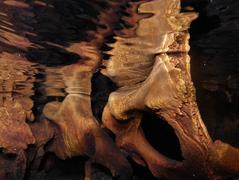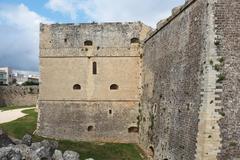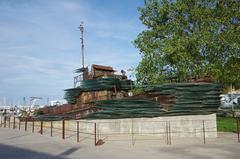
Deer Cave (Grotta dei Cervi) Otranto, Italy: Visiting Hours, Tickets, and Travel Guide
Date: 14/06/2025
Introduction
Nestled near the picturesque coastal town of Otranto in the Apulia region of Italy, the Grotta dei Cervi (Deer Cave) is one of Europe’s most extraordinary prehistoric sites. Discovered in 1970, the cave is celebrated for its vast and intricate Neolithic pictorial ensembles—nearly 3,000 pictograms and hundreds of painted scenes—dating back to the 5th millennium BCE. These rare artworks provide a unique window into the ritualistic, symbolic, and daily life of early Mediterranean societies, featuring scenes of deer hunting, anthropomorphic figures, and enigmatic geometric motifs that suggest shamanic and fertility cult practices.
Due to the delicate microclimate that preserves these millennia-old paintings, Grotta dei Cervi is closed to the general public and accessible only to authorized researchers. However, visitors can immerse themselves in its legacy through high-resolution virtual tours and life-size reproductions at the Aragonese Castle in Otranto and regional museums. This guide offers comprehensive information on Grotta dei Cervi’s history, archaeological significance, visitor access, virtual experiences, and nearby attractions—helping you plan an enriching visit to this Neolithic treasure. (Preistoria in Italia, artepreistorica.com, Katherine Dolan Writes)
Table of Contents
- Introduction
- Location and Geological Setting
- Discovery of the Cave
- Archaeological Context and Dating
- The Cave Paintings: Materials and Symbolism
- Ritual and Cultural Significance
- Conservation Status and Accessibility
- Virtual Access and Museum Exhibits
- Nearby Attractions and Travel Tips
- FAQ About Visiting Grotta dei Cervi
- Conclusion and Call to Action
- References
Location and Geological Setting
Grotta dei Cervi is located in Porto Badisco, about 10 kilometers south of Otranto, Lecce province, in Apulia, Italy. The entrance sits roughly 28–30 meters above sea level, overlooking the Porto Badisco inlet. The cave system winds through about 1,500 meters of white karstic limestone, reaching a depth of 26 meters below sea level. The surrounding Mediterranean landscape is characterized by laurel, myrtle, orange, and olive groves, and is rich in ancient springs and watercourses. (Preistoria in Italia)
Discovery of the Cave
On February 1, 1970, the “Gruppo Speleologico Salentino de Lorentiis” discovered the cave while exploring the Porto Badisco inlet. A cool draft emanating from a small rock opening led them to the astonishing discovery of hundreds of prehistoric paintings, predominantly deer hunting scenes. Initially known as “Grotta di Enea,” it was soon renamed “Grotta dei Cervi” in honor of its vivid depictions of deer. Paolo Graziosi, founder and director of the Istituto Italiano di Preistoria e Protostoria in Florence, led the first systematic research and preservation efforts. (Preistoria in Italia)
Archaeological Context and Dating
Grotta dei Cervi’s archaeological significance is rooted in its Neolithic usage, with some evidence suggesting sporadic Paleolithic occupation. The most intensive period of activity dates to the Late Neolithic, when the cave functioned as a ritual and religious sanctuary, particularly for the Mother Earth deity, a symbol of fertility and agricultural abundance. Radiocarbon dating of hearth remains and artifacts places the primary period of use around 3900 ± 55 BCE. (Preistoria in Italia)
The Cave Paintings: Materials and Symbolism
The cave is home to almost 3,000 pictograms and hundreds of pictorial scenes—deer hunting, stylized human figures, abstract motifs, and ritual imagery. Red ochre and cinnabar (mercury sulfide, HgS) were used as pigments, the latter being rare and reserved for ritual or funerary contexts, highlighting the cave’s sacred status. The schematic, ideographic style contrasts with Upper Paleolithic naturalism and is interpreted as reflecting altered states of consciousness and shamanic traditions. (Katherine Dolan Writes, ScienceDirect)
Ritual and Cultural Significance
Grotta dei Cervi was more than a shelter—it functioned as a sanctuary for fertility and agricultural rites, evidenced by schematic paintings, ritual vessels, and ceremonial objects. The cave’s art and artifacts offer unique insights into the symbolic and spiritual life of early Mediterranean societies. (Preistoria in Italia)
Conservation Status and Accessibility
Why is the Cave Closed?
To preserve the fragile artworks and the cave’s delicate microclimate (98–100% humidity, ~18°C temperature), Grotta dei Cervi is closed to the public. Human presence would disrupt these conditions, risking irreversible damage.
Access Policy
- Public entry: Not permitted.
- Guided tours inside cave: Not available.
- Research access: Strictly limited to authorized scholars via the Soprintendenza Archeologica di Taranto.
- Security: The site is fenced and monitored.
Virtual Access and Museum Exhibits
Virtual Tours
A high-resolution 3D virtual model was developed in 2004 by the University of Lecce, the National Research Council of Canada, and the Soprintendenza Archeologica della Puglia. Since 2016, visitors can explore this immersive virtual tour at the Aragonese Castle in Otranto, featuring life-size reproductions of cave paintings, ceramic artifacts, and pintadere (clay stamps) from the cave. (Preistoria in Italia)
Museum Exhibitions
- Aragonese Castle, Otranto: Hosts the official virtual tour and replicas of the artwork.
- Museo di Maglie: Displays artifacts and interactive digital reconstructions.
Nearby Attractions and Travel Tips
While direct entry to Grotta dei Cervi is prohibited, the region offers diverse attractions:
- Otranto Historic Center: Medieval walls, cathedral with mosaic floors.
- Porto Badisco Beach: A scenic inlet for swimming and hiking.
- Grotta Romanelli & Grotta del Cavallo: Important prehistoric caves nearby.
- Otranto-Leuca Natural Park: Combines natural beauty with archaeological sites.
Travel Advice
- Best time to visit: Spring or autumn for milder weather and fewer crowds.
- Getting there: Porto Badisco is accessible by car or local bus from Otranto.
- Accessibility: Museums and the Aragonese Castle are generally wheelchair accessible; natural terrain may be challenging for some visitors.
- Advance booking: Recommended for museum entry and guided city tours, especially in high season.
Frequently Asked Questions (FAQ)
Q: Can I visit Grotta dei Cervi in person?
A: No, the cave is closed to the public for conservation. Only authorized researchers may enter.
Q: Where can I see the cave’s artwork?
A: Visit the Aragonese Castle in Otranto for a high-resolution virtual tour and reproductions.
Q: Are guided tours available?
A: Guided tours of the cave are not available, but local guides offer heritage tours including the castle and museums.
Q: Are virtual tours offered online?
A: The main virtual experience is on-site at the Aragonese Castle, though digital resources are also available from museums.
Q: Is the site accessible for people with disabilities?
A: The Aragonese Castle and museums offer wheelchair access; the natural terrain at Porto Badisco may be less accessible.
Q: Are there special events or exhibitions related to the cave?
A: Occasionally, cultural events or temporary exhibitions are held at local museums—check official tourism websites for current information.
Conservation and Responsible Tourism
- Do not attempt to enter the cave or cross barriers.
- Support local museums and conservation efforts.
- Respect the environment and local customs when exploring the area.
Summary and Recommendations
Grotta dei Cervi stands as a singular jewel of Mediterranean prehistory, offering invaluable insights into ancient symbolic systems and spiritual life. Although direct entry is not possible, innovative virtual tours and museum exhibitions at the Aragonese Castle in Otranto provide accessible, immersive experiences. Complement your visit with Otranto’s historic center and the region’s many prehistoric and natural attractions.
To stay informed, download the Audiala app for curated cultural content, virtual guides, and updates on special events. By embracing responsible tourism and technology, you help ensure that Grotta dei Cervi’s extraordinary legacy remains protected and inspires future generations.
References
- Preistoria in Italia - Grotta dei Cervi
- The Deer Cave - artepreistorica.com
- Otranto of the East - Katherine Dolan Writes
- ScienceDirect Article on Pigments
- Salento’s Most Beautiful Caves - hdsalento.com
- Grotta dei Cervi - Wikipedia
- Grotta Cervi Salento Porto Badisco - Puglia.com
Media suggestions:
- Photograph of Grotta dei Cervi cave entrance (alt=“Grotta dei Cervi cave entrance near Otranto”)
- Reproductions of cave paintings at Aragonese Castle (alt=“Reproductions of Neolithic cave art from Grotta dei Cervi at Otranto Castle exhibition”)
- Map showing location of Grotta dei Cervi and Otranto historical sites (alt=“Map of Grotta dei Cervi and nearby Otranto attractions”)


